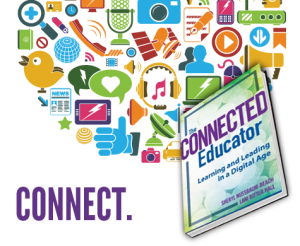What's in your Toolbox?
There's no point to make connective learning so difficult when there are plenty of tools designed to make the process easier. The great thing about networks is that people are constantly trying to improve and find the most efficient way to get things done.
For this weeks blog, we were asked to read Chapter 5, "Using Tools to Support Connected Learning," out of Connected Educator written by Sheryl Nassbaum-Beach and Lani Ritter Hall. This chapter was incredibly useful for beginners like myself. There are a copious amount of programs and networks that I have never heard of until reading this book. It's amazing the tools you can use to make networking painless. So the first tools that were mentioned, were mainly for book marking or tagging purposes. This is basically just a way to organize the information you are retrieving.
The first site they discussed is called Delicious, which is a well liked website for bookmarking. This makes searching a lot less time consuming as well, instead of searching the broad spectrum of Google. You can just tag the websites you like and revisit them whenever you'd like. It is also a convenient way to collaborate resources.
The next one is called Diigo, another social bookmarking community, resembling similar characteristics of Delicious, but has enhanced features. The cool thing about Diigo is that you can make annotation right on the webpages that you're saving. You can also add sticky notes or highlight certain information. Furthermore, you can split your page up into three different sections. The three sections are My Library, My Network, and My Groups. A place for research, a place to build your personal learning network, and a place to collaborate.
Subsequently, we have tools that are mostly for connecting and sharing. The most significant collaborative tool are blogs. Web-blogs are journal-like entries that share information and experiences that enable you to receive feedback. A couple of free blog websites are Word Press, Blogger, and Tumblr.
Following, we have podcasts, which are audio and/or video files. You can download these on laptops, smartphones, or an ipod. Convenience is key here. You can just easily download and listen to them whenever you want!
Additionally, one of the popular microblogging sites is Twitter. It is for all types of people to connect and build a personal learning network. Twitter connects worldwide. It is a very short way of sharing information, thoughts, and experiences including pictures and videos.
Lastly, for the blogging type tools, we have Google Documents. This is my personal favorite, mainly for the collaborative aspect of it. Google Docs is set up very similar to Microsoft Word. The main difference is that you can share the document with whomever you'd like and everyone can work on the same paper at the same time and it will save simultaneously. This is extremely beneficial for group projects or papers. Definitely a life-saver for a college student!
The final subject that I'd like to make mention of from this chapter is about managing your online reputation. We should all be aware that your digital footprint is something that will follow you for the rest of your life. You want to display yourself in the most positive and professional. Your activities and behavior online directly reflect your online image. A great way to track yourself is on Google Alerts. You're able to see when your name is used online and what pops up when that occurs.
Online reputation is a vital part of surviving this society today. This week in class we presented stories of when social media had been used incorrectly and the negative effects of it. Everyone brought in different stories of how it can affect your image, your job, or even your life. Think before you act.







This is a great post :)
ReplyDelete